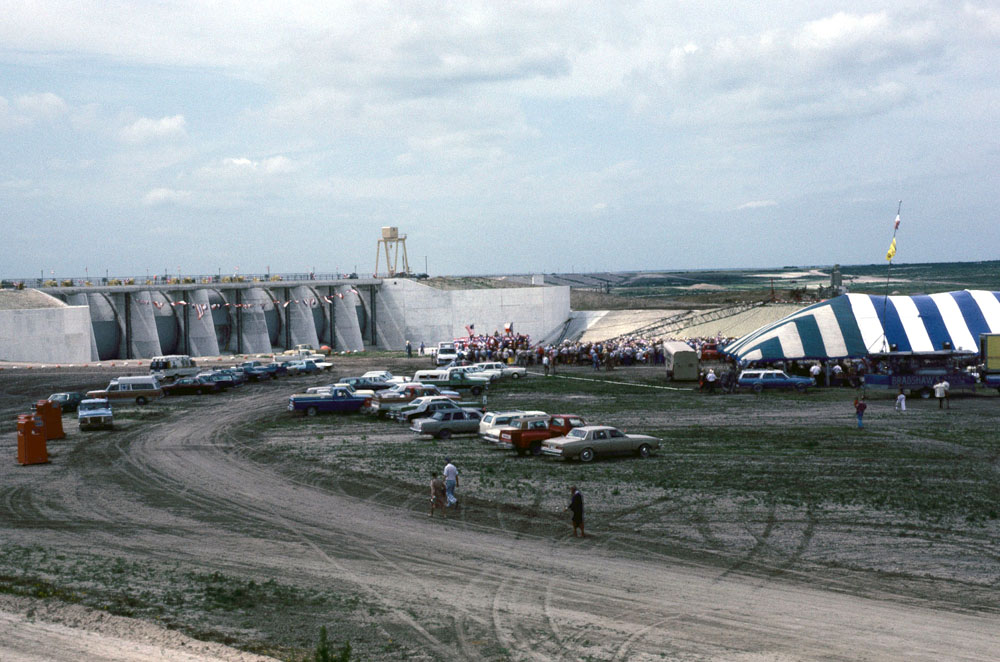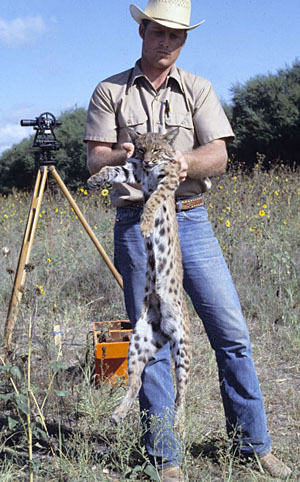Conclusion
|
The mundane archaeological specimens recovered from the sites at Choke Canyon are not overly remarkable in-and-of themselves, even considering the fact that many perishable tools and possessions that the people used did not survive to be found by archaeologists. It is a mistake, however, to try to judge the prehistoric residents of Choke Canyon by the quality of their preserved possessions and how they made a living. The true accomplishment and lasting legacy of these people was in their ability to survive the vicissitudes of life in a harsh land, at times a changing and unpredictable environment. Today, as we look out across the South Texas Brush Country that often seems so hostile to human life, we must appreciate the fact that people did survive and flourish here for thousands of years as hunters and gatherers, and the testimony of their success and adaptability is found in sites such as Possum Hollow, Gates-Rowell, and Skillet Mountain #4. Though primitive in our eyes, their lifeways and technologies were well-adapted to the challenges they faced. They lived and worked with family throughout their lives. Moreover, modern studies of hunting and gathering peoples in remote areas of the world show that members of such societies typically have much more free time to socialize, watch after one another, and celebrate life than do most of us today. The archeological work accomplished along the Frio River prior to the creation of Choke Canyon Reservoir significantly increased knowledge of the prehistory of the South Texas Plains. And yet much still remains to be learned about how hunters and gatherers lived in this region. Hundreds of campsites still deeply buried in the alluvium of the Frio, the Nueces, and their major tributaries hold tremendous potential for future archeological investigations. These are far less threatened that most sites in the region because they are buried and because most will have meager artifact recovery; for archeologists this matters much less than context -- finding intact campsites that weren't occupied for long before being buried by flood sediments. A significant challenge remains for archeologists to refine knowledge of the changing climate back through time and to learn more about the plant and meat foods that prehistoric people at Choke Canyon relied upon for their subsistence. These and other "thrills of discovery" await the efforts of the next generations of archeologists to work in the core of the South Texas Plains. CreditsWritten by Dr. Grant D. Hall, Texas Tech University, who also provided most of the photographs. The unattributed photographs were taken by Hall and various CAR-UTSA archeological crew members who served as project photographers. During many of the Choke Canyon work sessions, Robert (Bob) Stiba of Taylor, Texas was the chief photographer. Many of Stiba's images of the natural resources that are credited in this exhibit were those taken with his personal camera and film. Other featured photographs were taken by Curtis Dusek, who grew up on a ranch near Calliham, Texas, which is now under the waters of Choke Canyon Reservoir. Dusek also served on the CAR-UTSA crews and took part in the investigation of the prehistory of his own backyard. Hall is originally from Edinburg, Texas. He received his Ph.D. in Anthropology from Harvard University in 1989 following undergraduate study at the University of Texas. From 1990 to 2004, he taught archeology at Texas Tech, where he was an associate professor. He is now academic director at Texas Tech's Junction Center. Hall worked in Texas contract archeology from 1973 to 1983. He directed the archeological investigations at Choke Canyon while working for the Center for Archaeological Research at the University of Texas at San Antonio. His current research and field work involves Presidio San Saba, a Spanish colonial fort founded near Menard, Texas in 1757. Hall and Dr. Tamra Walter have directed six Texas Tech field schools at the presidio, joined by Texas Archeological Society field schools in 2003, 2004, and 2007. Hall and Walter are working with the Presidio de San Saba Restoration Corporation on plans for reconstructing the presidio. Choke Canyon ProjectThe archeological collections and records of the Choke Canyon investigations are archived at the Center for Archaeological Research, University of Texas at San Antonio (CAR-UTSA). An archeological project on the scale of the Choke Canyon investigation required several years and the effort and talents of numerous people. Many individuals were involved in the work at Choke Canyon, resulting in a 12-volume technical report series totaling 2700 pages. Large crews of skilled field archeologists made the critical contribution of recovering the raw data from the sites. Their names may be found in the introductory pages of each of the reports. Some project contributors who deserve special recognition include: Dr. Thomas R. Hester, Principal Investigator and Director, CAR-UTSA; Dr. Thomas N. Campbell and Tommy Jo Campbell, ethnographic consultants, UT-Austin; archeological teams from Texas A&M and Texas Tech University; residents of Live Oak and McMullen counties including Hank and Fay Hester, Bill Tullis, Henry Dusek, Melvin Dusek, and Sam Bracken; Allen C. Gates and the staff of the U. S. Bureau of Reclamation’s Choke Canyon office; CAR-UTSA Laboratory staff, especially Janet Stock and Lynn Highley; and CAR-UTSA Office and Production staff, especially Mary Lou Ellis, Sharon Quirk, Al Wesolowsky, Kathy Bareiss Roemer, and Kenneth M. Brown. SourcesHall, Grant D., Stephen L. Black, and Carol Graves Highley, C. Lynn Scott, Robert F., IV See full list and availability of the 12-report Choke Canyon Series, CAR-UTSA website. |

